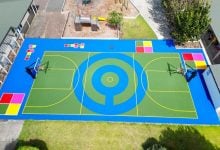Autism Spectrum Disorder: An invisible disability

 Autism and Asperger syndrome remain relatively unknown disabilities among the general population despite having a higher incidence than cerebral palsy and Down’s syndrome.
Autism and Asperger syndrome remain relatively unknown disabilities among the general population despite having a higher incidence than cerebral palsy and Down’s syndrome.
In fact, it is estimated that 1 in 100 people have an Autism Spectrum Disorder (ASD) and the incidence appears to be on the rise worldwide.
An estimated 40,000 New Zealanders are affected by ASD, many of whom could be students in mainstream education, although the exact number of these is uncertain.
So what is autism spectrum disorder and what strategies can teachers put in place to teach those affected?
Alison Molloy, the chief executive officer of Autism New Zealand, says autism is a lifelong developmental disorder that affects a person’s behaviour, communication, socialising skills and sensory issues.
“It occurs in all racial, ethnic, and social groups, and is four times more likely to strike boys than girls. It is called a spectrum disorder because it varies from person to person.”
Resources
|
Due to the invisible nature of ASDs it is hard to tell just by looking at someone whether or not they have autism so creating awareness and understanding towards this disability is difficult, she says.
Managing an autistic child in the classroom does require a high level of patience and understanding.
These children face many challenges and may struggle to learn in a typical classroom environment, which may seem chaotic and disorganised to them.
Many things that are considered normal to other children act as triggers for anxiety and unusual behavioural responses in children with ASD. For example, flickering lights, unusual noises (or a lot of noise), changes to routines can unsettle an autistic child.
Molloy says learning will be easier if external stimuli can be reduced and they are able to concentrate on their work. This may be facilitated by one-on-one assistance from a teacher’s aide or classroom assistant. “Someone with ASD is likely to take things very literally so the teacher may have to tailor their presentation to accommodate this.”
Other challenges autistic students have in the classroom centre around their different learning styles and the understanding of others, both staff and fellow pupils.
To ensure the autistic child’s (or any child with a learning disability) needs are being meet, it is essential to develop an Individual Education Programme (IEP) for that child. Working with professional support as well as parents can also assist in meeting the student’s needs.
“A good teacher can make a huge difference to any child, whether they have ASD or not,” says Molloy.
“Knowing what causes changes to behaviours in an individual and working to avoid these is critical, as is an understanding of the general characteristics of the autism spectrum.”
Recognising behavioural issues before they happen is also an important aspect to teaching students with autism.
“Have strategies in place to take the child out of the situation is often the best way to handle these challenges,” says Molloy.
Also important is listening to parents of autistic children as they tend to know best how to manage their child. “Parents often provide the best information as to how to manage a particular child’s response as all children are different,” she says.
“There is a saying that ‘if you meet a child with autism you have met a child with autism’, which means the characteristics in each child (and adult) manifest themselves in different ways and it is not safe to assume that meeting one is sufficient to understand autism as a whole,” Molloy explains.









